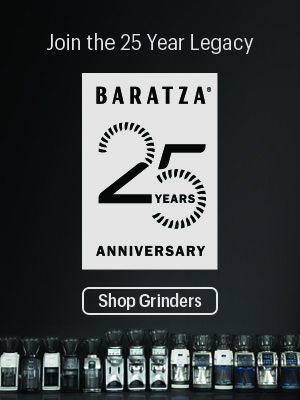I love the fact that coffee can change so much just by sitting in my cup. Straight out of the French Press, at the Ken Davids – recommended 185F-190F brewing temperature, the actual taste of the coffee is hard to discern. Oh, it gives certain first impressions, to be sure. Quality of the bean is immediately apparent. Poor quality beans will give that sour taste we’ve all experienced way too many times. Freshness of the grind is, hopefully, something noticed right away.
Strength of the brew is also easy to discern at that first sip, as are some of the ‘big’ flavor profiles– the sharpness of a good Zimbabwe or the rich body of a Colombian, for example. But anything more subtle, like the difference between a Peruvian and a Guatemalan, or even the difference between a wet- and dry-processed bean, is lost in the temperature. Burned out, as it were.
Burned out, perhaps, but not gone. Within minutes (or less, depending on your mug), all that nuance and all those subtleties begin to peek through. From the first sip (coffee-hot!) to the fifth (coffee-mmm!) – now we really know something about this brew. To drink quality coffee is to tour the world, and if the coffee is a single-origin, the discerning consumer now has a pretty good chance of identifying and appreciating the ‘varietal distinctiveness’. We know that this coffee is an Ethiopian, and now we can tell if it’s a Sidamo or a Harar. If it’s a blend, now’s the time to appreciate the blender’s craft. Find the fruity Yemen, play it against the smoky Java, and know why people have been blending these two beans for almost 400 years. This is the time to enjoy your coffee for what it is, and for what it’s supposed to be.
And now, as hard as it is, let your cup sit for a few more minutes. Most normal people will have their cup empty by now, or else they’re trying to flag down the waitress for a “warm-up”. (We won’t even talk about the people who use a microwave…) But if your coffee’s worth drinking, now’s the time to drink it. Big sips – a whole mouthful. No more concern for your tender little tongue. Now you can really tell something about your coffee. You know how carefully the fruit was picked and sorted. You know if the cherries were washed off in a tank or left to dry on a dirt patio in the sun.
If you haven’t been able to find it yet, here’s where you can taste the spicy-fruity ring of cardamom in your perfectly-roasted Yrgacheffe. This is the part of the cup that makes you glad you brew with a French Press and didn’t leave all those aromatics behind in the paper filter. Here’s where a palate more discerning than mine can tell a Tarrazu from a “regular” Costa Rican, or a fine estate Kenya from the hordes of burlap sacks stenciled with a generic “AA”.
Interestingly enough, people strike me in the same way. For all importance that people give to “first impressions”, they really don’t mean much at all. It’s really like that first few sips of really hot coffee. You learn a thing or two, at best, about the person. Unless you’re really perceptive, you’re not likely to find out much more than if they’re having a good day or not. Like the hot coffee, most of their character is obscured – burned out, as it were – by the mere act of interacting with them for the first time.
For most people you meet, though, a first impression is enough. You don’t need to know the clerk’s life story for her to swipe your credit card to pay for groceries. Your mailman is probably just a guy in a blue uniform who looks cold in the winter and hot in the summer. They do their job, you do yours, and that’s that. The hot coffee is just coffee, consumed for morning caffeine or to stave off the afternoon sleepies, to wash down the donut or just out of habit. Like the humdrum of daily people, it is anonymous and unremarkable in its utilitarian disguise.
But just wait. Wait a while. How long depends on the person, but sooner or later those broad, generic first impressions will start to fade away and be replaced by the person’s true character. In a coffee, it’s called cup profile. In people it’s personality. Maybe after an evening… maybe after a few weeks. Maybe it takes a whole semester in class, or even years of casual acquaintanceship. But like a cup of coffee left to cool slightly, those people seem to develop a whole new aspect to themselves. Or rather, you just notice new things about them as stereotypes become the real person. The walls come down, or at least get lowered enough for you to sneak a peek at what’s beyond them.
The funny thing is, as you are noticing things about that person, getting to see the real them, they are doing the same with you. It’s that reciprocity that makes new friendships so dynamic. Of course, it’s possible that you may not like what you find, just like you may try a Monsooned Malabar and think it tastes like dirt. But now’s the time to make that decision: not right at the first impression. My first taste of coffee ever was at my grandma’s knee, a blazing hot Folger’s Instant Decaf, sipped under a shade tree in Missouri in July. Naturally, I spit it out. I can’t imagine the ramifications in my life if I hadn’t given coffee a second chance…
And now, hard as it is, let your new friendship sit. Really get to know the person. Travel with them. A road trip. Go through something extraordinary together. An adventure, truly unplanned. Face a challenge side-by-side. Really share. Take big sips of each other. Drink lots of coffee together. Here’s the part of the friendship that makes you glad you don’t judge a book by its cover, and didn’t leave all the richness and depth of this person behind when you made your first impression of them. Even if you don’t get a very long time together, it will still be a lot of time. And strange as it is, it will end up just like that cup of coffee. You will find something in that person you never expected to find.
You may only get one really good cup of Eastern Timorese coffee in your life (so far, I have). You may never see that person again in your life after your time is over. But the incredible thing about people is that usually, by the time you get to know them this well, they’re with you for good. There is a place for them somewhere in your life. It may be a small place that you don’t get to visit very often. But that person has already ended up in your personal history, already made their mark on you, and you’re likely a better person for it. I once said that I’d rather meet people than do stuff. I think this is why.
But now is when the comparison between coffee and friendships really starts to mean something. Let your coffee sit – really sit. Leave the travel mug in your car all night. Drink the last cup of your morning coffee after your afternoon nap. Make sure it’s stone cold. If you’re afraid to do this, then you drink bad coffee. But if you’ve done this and found, to your surprise, that your coffee is still good, then you know exactly what I mean. I’ve always said that the mark of truly good coffee is that it’s still good even when it’s cold.
I think I’d like to modify that – good coffee is good in a completely different way when it’s cold. Nothing is left of what used to make it a good coffee. Nothing remains of the other three stages of the cup, no body or acidity, floral scents or mouth feel. Nothing is nameable or identifiable, tangible or tasteable. It’s just Coffee. And it’s great. It’s great to those who know great coffee. It’s tough to describe it, but it’s there, like your own personal Joy. It’s not so much denotation, the carefully-worded descriptions of great coffee that professionals use to describe the product. It’s all about connotation – a dance of flavors, scents, impressions and images to delight the senses and tantalize the tongue.
Just like an old friend.
You can’t drink just any cup of coffee stone cold, and most of your friendships aren’t like this, either. With this kind of friend, you don’t even remember why they’re your friend anymore. They just are. They’re there, and for all intents and purposes, they always have been. They’re not your friend because of anything – it’s the other way around. The things in your life are because they are your friend. Nothing about your friendship is nameable or tangible anymore. It’s tough to describe it, but it’s there – just under the surface, and it affects your life now in ways you don’t even realize. Or maybe you do realize it, and you’re glad to come back and find one more cup left at the bottom of the thermos…
A lot can happen between the top and the bottom of a cup of coffee. A newspaper can be read. A donut eaten. A business deal can be made or broken. A love can grow or die. Flavors change, mellow, mature, and come to light. By the end of the cup you wish it could start all over again. By the last sip, it’s not even the same coffee you started out with, and you’re glad for all that it is, and all that it has been.
May your life be blessed. May you find a few cold-coffee friends.






















